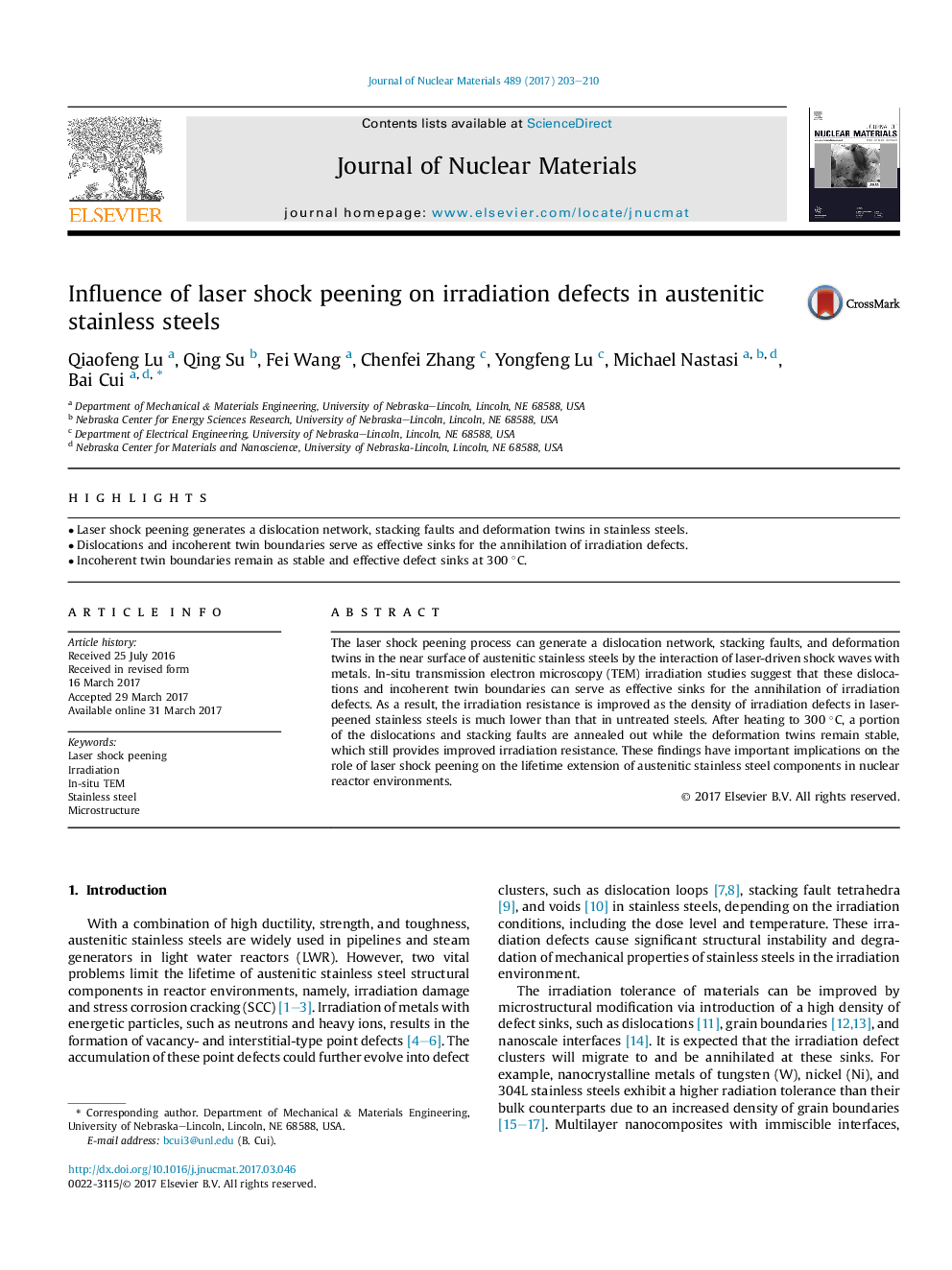| Article ID | Journal | Published Year | Pages | File Type |
|---|---|---|---|---|
| 5454346 | Journal of Nuclear Materials | 2017 | 8 Pages |
Abstract
The laser shock peening process can generate a dislocation network, stacking faults, and deformation twins in the near surface of austenitic stainless steels by the interaction of laser-driven shock waves with metals. In-situ transmission electron microscopy (TEM) irradiation studies suggest that these dislocations and incoherent twin boundaries can serve as effective sinks for the annihilation of irradiation defects. As a result, the irradiation resistance is improved as the density of irradiation defects in laser-peened stainless steels is much lower than that in untreated steels. After heating to 300 °C, a portion of the dislocations and stacking faults are annealed out while the deformation twins remain stable, which still provides improved irradiation resistance. These findings have important implications on the role of laser shock peening on the lifetime extension of austenitic stainless steel components in nuclear reactor environments.
Related Topics
Physical Sciences and Engineering
Energy
Nuclear Energy and Engineering
Authors
Qiaofeng Lu, Qing Su, Fei Wang, Chenfei Zhang, Yongfeng Lu, Michael Nastasi, Bai Cui,
